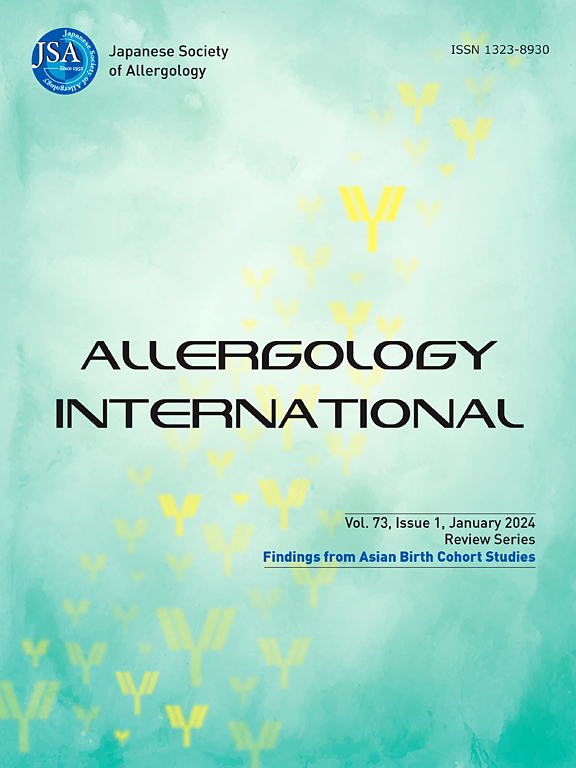YTHDF1 regulates the proliferation and differentiation of keratinocytes via the PI3K/AKT signaling pathway in atopic dermatitis
IF 6.7
2区 医学
Q1 ALLERGY
引用次数: 0
Abstract
Background
YTHDF1, a critical regulator of cellular processes, has attracted attention for its involvement in some inflammatory diseases. However, its specific association with atopic dermatitis (AD) remains unclear. The objective is to investigate the functional roles and underlying mechanisms of YTHDF1 in AD.
Methods
The expression of YTHDF1 was investigated by bioinformatics analysis and skin lesions of AD patients. The functional role and upstream and downstream regulatory mechanisms of YTHDF1 were examined through a series of in vitro and in vivo experiments. Adeno-associated virus (AAV)-mediated delivery of YTHDF1 in the AD mouse model was evaluated for its therapeutic potential.
Results
Bioinformatics analysis revealed that the YTHDF1 mRNA level in the skin lesions of AD was significantly higher than that in healthy people. YTHDF1 expression was significantly elevated in AD skin lesions, the DNCB-induced AD mouse model, and primary human keratinocytes and HaCaT cells stimulated with interleukin (IL)-4/IL-13, compared to controls. Both in vitro and in vivo experiments revealed that upregulation of YTHDF1 in AD exacerbated cell proliferation and inhibited keratinization by activating the PI3K/AKT pathway, which was modulated via the IL-4/IL-13/STAT3 axis. Moreover, topical application of AAV-YTHDF1 significantly improved AD-like lesions in the mouse model.
Conclusions
This study identifies YTHDF1 as a contributor to AD pathogenesis by influencing keratinocyte proliferation and differentiation. It also suggests that YTHDF1 could be a potential therapeutic target for AD treatment.

在特应性皮炎中,YTHDF1通过PI3K/AKT信号通路调控角质形成细胞的增殖和分化。
背景:YTHDF1是细胞过程的关键调节因子,因其参与一些炎症性疾病而受到关注。然而,其与特应性皮炎(AD)的具体关系尚不清楚。目的是研究YTHDF1在AD中的功能作用和潜在机制。方法:通过生物信息学分析和AD患者皮肤病变情况研究YTHDF1的表达。通过一系列体外和体内实验,研究了YTHDF1的功能作用和上下游调控机制。腺相关病毒(AAV)介导的YTHDF1在AD小鼠模型中的传递被评估其治疗潜力。结果:生物信息学分析显示,AD皮损组织中YTHDF1 mRNA水平明显高于健康人。与对照组相比,YTHDF1在AD皮损、dncb诱导的AD小鼠模型以及白细胞介素(IL)-4/IL-13刺激的人原代角质形成细胞和HaCaT细胞中的表达显著升高。体外和体内实验均表明,在AD中上调YTHDF1可通过激活PI3K/AKT通路(通过IL-4/IL-13/STAT3轴调节),从而加剧细胞增殖并抑制角化。此外,局部应用AAV-YTHDF1可显著改善小鼠模型ad样病变。结论:本研究确定YTHDF1通过影响角质细胞增殖和分化参与AD的发病机制。这也表明YTHDF1可能是阿尔茨海默病治疗的潜在治疗靶点。
本文章由计算机程序翻译,如有差异,请以英文原文为准。
求助全文
约1分钟内获得全文
求助全文
来源期刊

Allergology International
ALLERGY-IMMUNOLOGY
CiteScore
12.60
自引率
5.90%
发文量
96
审稿时长
29 weeks
期刊介绍:
Allergology International is the official journal of the Japanese Society of Allergology and publishes original papers dealing with the etiology, diagnosis and treatment of allergic and related diseases. Papers may include the study of methods of controlling allergic reactions, human and animal models of hypersensitivity and other aspects of basic and applied clinical allergy in its broadest sense.
The Journal aims to encourage the international exchange of results and encourages authors from all countries to submit papers in the following three categories: Original Articles, Review Articles, and Letters to the Editor.
 求助内容:
求助内容: 应助结果提醒方式:
应助结果提醒方式:


